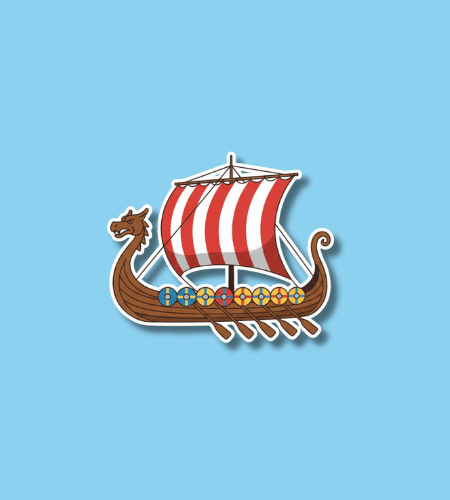Leif Erikson Day is observed on October 9 each year. This day honors the Norse explorer Leif Erikson, who is believed to have led the first European expedition to reach North America (outside Greenland), and celebrates his legacy of exploration, courage, and the contributions of Nordic heritage.
Table of Contents
History of Leif Erikson Day
The exact date of Leif Erikson’s voyage to North America is lost to history; the Icelandic sagas describe a journey in the autumn around the year 1000, but they do not specify a calendar date. Over time, Leif Erikson was increasingly recognized as a pre‑Columbian explorer, especially among communities of Scandinavian descent in North America.
In 1925, during the Norse‑American Centennial, President Calvin Coolidge publicly acknowledged Leif Erikson as the first European to discover America, based on work by Norwegian‑American scholars. In the U.S., a joint resolution passed Congress on September 2, 1964, authorizing the President to annually proclaim October 9 as Leif Erikson Day; later that month, President Lyndon B. Johnson issued Proclamation 3610 marking the first official observance. Over the years, many states—especially in the Upper Midwest—have adopted local observances, and communities with Nordic heritage celebrate the day with festivals, ceremonies, and cultural events.
Why is Leif Erikson Day important?
Leif Erikson Day serves as a means to broaden understanding of early exploration and to challenge the more traditional narratives that place Columbus at the center of “discovery” of the Americas. It highlights that the story of human exploration is more complex and includes voices and voyages often overlooked. In doing so, it encourages more inclusive perspectives on history.
Additionally, the observance offers an opportunity to celebrate Nordic heritage, immigrant contributions, and the spirit of adventure. For many in communities descended from Scandinavia, it’s a cultural anchor—linking past to present, honoring resilience, maritime tradition, and the blending of identities in new lands.
Here are a few reflections on why the day resonates:
- It invites us to acknowledge exploration beyond the mainstream narratives
- It honors the courage to venture into the unknown
- It connects heritage, identity, and shared history
- It sparks curiosity about the Norse sagas, archaeology, and early voyages
- It gives descendants of Scandinavian settlers a day of remembrance and pride
How to Observe Leif Erikson Day
Marking Leif Erikson Day can be both educational and festive. You might begin by reading or discussing the Norse sagas—the Saga of the Greenlanders or Saga of Erik the Red—that recount voyages to Vinland, and comparing them with archaeological finds like L’Anse aux Meadows in Newfoundland. Organize or attend a lecture, exhibit, or virtual talk on Viking exploration, archaeology, or Norse culture. Museums, historical societies, or Scandinavian cultural centers often host these events.
In communities with Nordic heritage, festivals, parades, or gatherings may feature Viking reenactments, music, folk dance, food, and storytelling. You could host a small themed gathering—serve Scandinavian dishes, tell stories of voyages, or even have a “mini‑Viking ship” craft for children. Incorporating traditional Nordic music, symbolism (runestones, shields), or art can enrich the observance.
Here are some ideas to try:
- Read excerpts from Norse sagas and discuss them
- Visit a museum or watch a documentary on Viking exploration
- Host or join a Scandinavian heritage event, festival, or lecture
- Cook a Nordic meal or share Scandinavian recipes
- Encourage local schools or cultural groups to feature Norse history
Leif Erikson Day Dates Table
| Year | Date | Day |
|---|---|---|
| 2025 | October 9 | Thursday |
| 2026 | October 9 | Friday |
| 2027 | October 9 | Saturday |
| 2028 | October 9 | Monday |
| 2029 | October 9 | Tuesday |
Subscribe to our newsletter and never miss a holiday again!

